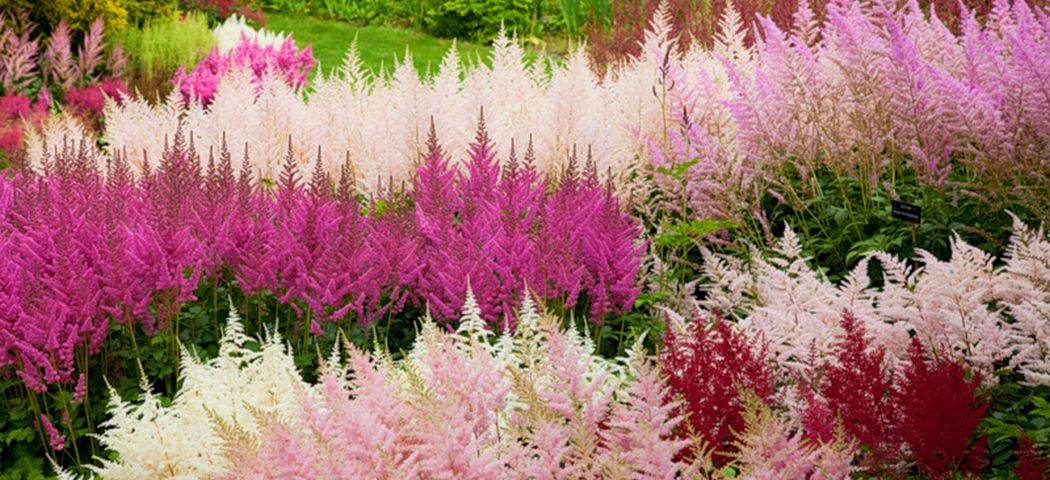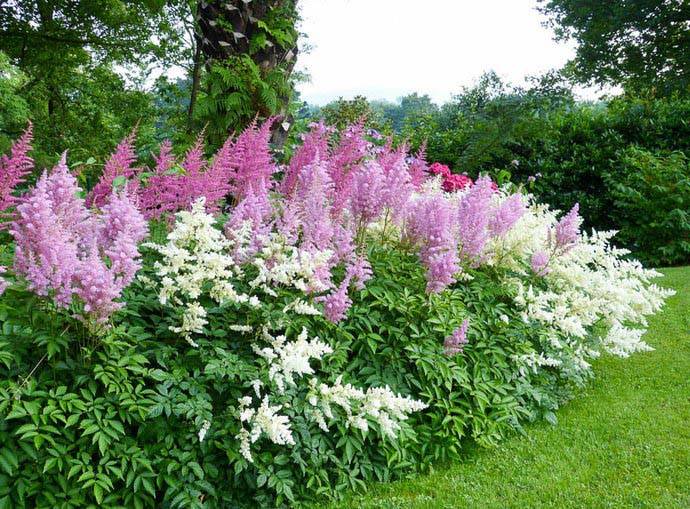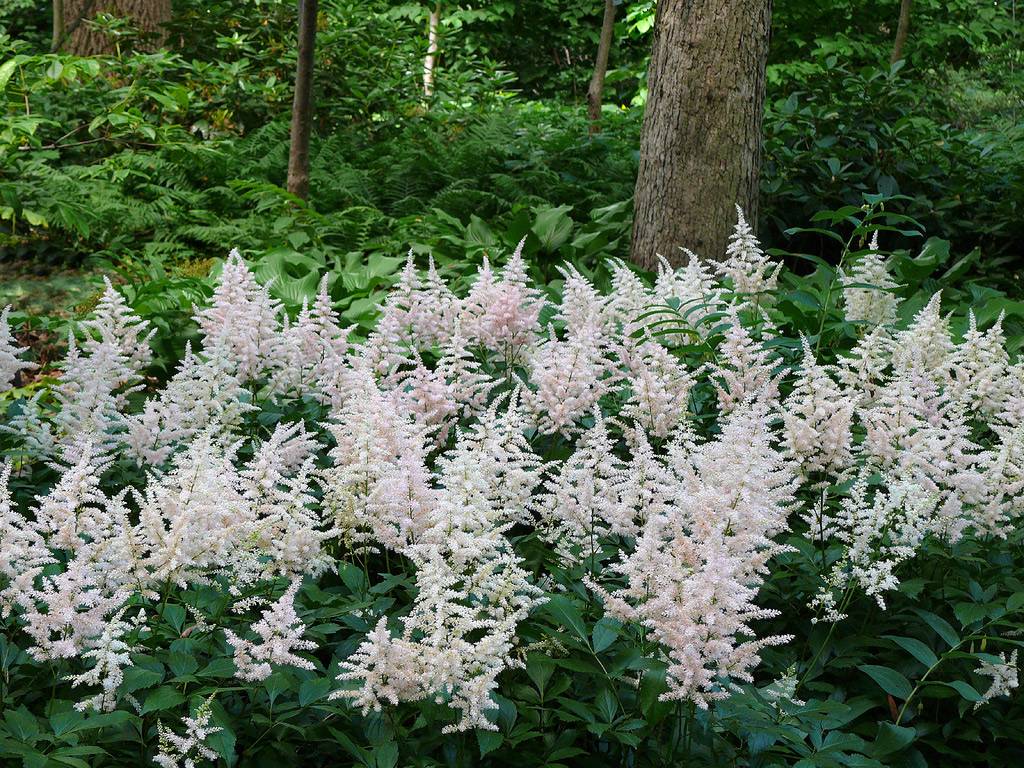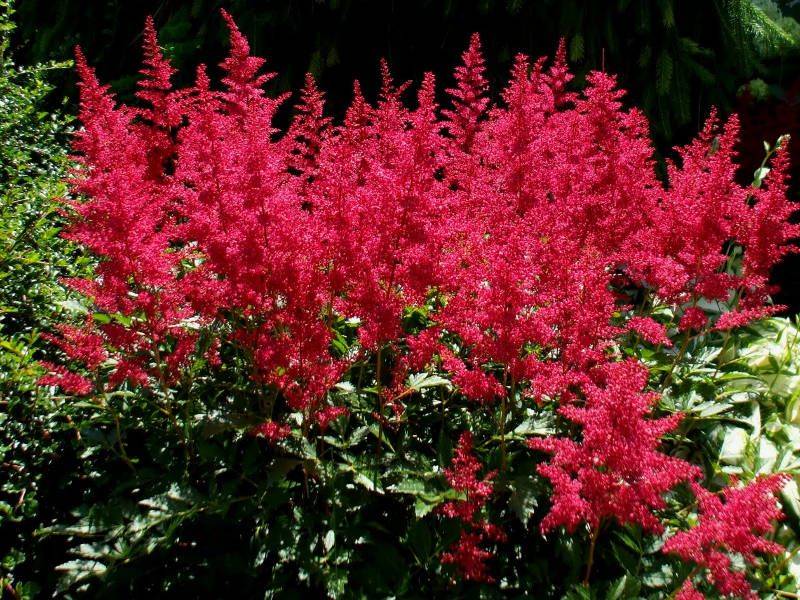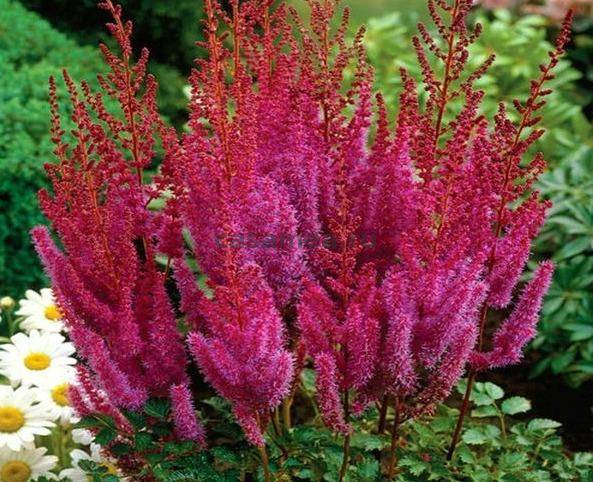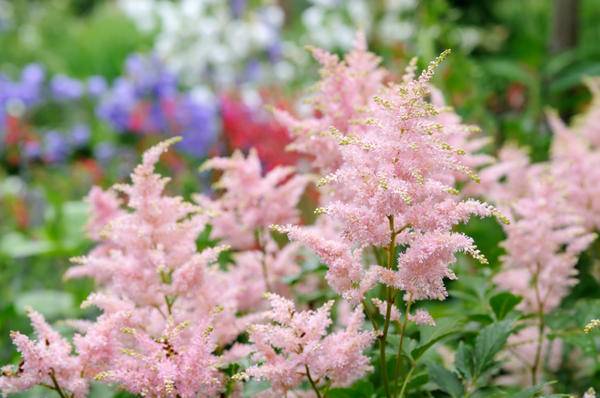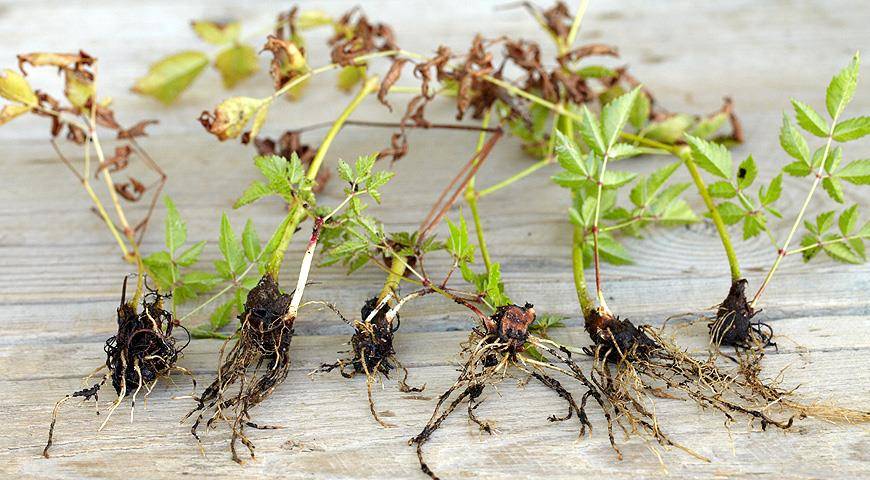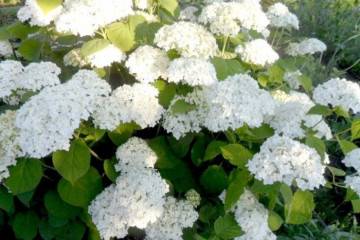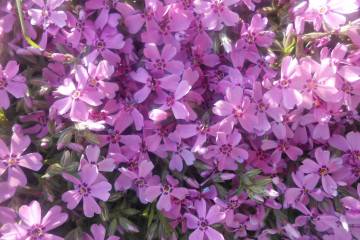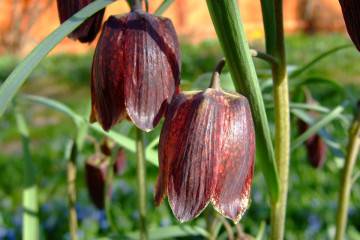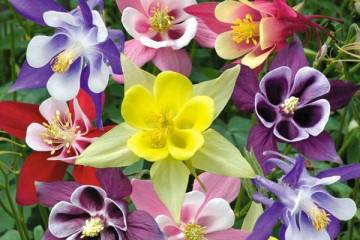Astilbe flower
Content:
Astilba has a unique appearance, its inflorescences cannot be confused with other plants. The name is translated from Greek as "very shiny", which characterizes the leaves of the plant. In the people you can hear the name "False goat" or "False spirea".
Description of the plant
In nature, astilbe can be found in North America, less often in East Asia. It grows in the forest zone, where conditions are predominantly humid.
The plant is characterized by an erect stem, inflorescences, depending on the species, are pyramidal, diamond-shaped, paniculate and even drooping, the shade of flowers is white, pink, lilac, lilac, purple. The leaves are feathery, dark green, dissected or long-petiolate, rough to the touch.
The plant belongs to the Saxifrage family. This is a perennial flower that belongs to decorative leafy and flowering crops.
Plant characteristic:
- shade-tolerant;
- hygrophilous;
- winter hardy;
- in height it can be low (from 10 to 50 cm), medium (from 50 to 100 cm), high (more than 100 cm).
The flowering period lasts 40 days. When astilba blooms depends on the species: it can be in June, July or August. At the end of flowering, seed pods appear in place of the panicles. One box contains up to 20,000 seeds.
The root system is woody. In the spring, during the period of active growth, buds appear on the roots, from which new shoots grow. Before freezing, the stems die off. The annual root growth is 5 cm.
Chinese astilba
Chinese astilbe is a shrub up to 100 cm high. It has complex, shiny, openwork leaves, which are covered with short red hair on the outside and inside. The flowers are predominantly lilac in color, can be pink and white. The inflorescences are dense, grow up to 35 cm in height.
The flowering period lasts more than a month: from mid-June to the end of July.
Japanese astilba
Japanese astilba has dark green, double-pinnate leaves. Burgundy branches that make the shrub attractive not only during flowering. The flowers are pink or white flowers, small, emitting a light sweet aroma. The length of the inflorescence reaches 30 cm.
When and how astilba blooms
In summer, the bush is covered with numerous lush inflorescences. Over the entire history of the existence of the flower, about 200 varieties have been cultivated, each of which has its own characteristics.
Inflorescence shapes:
- rhombic - the location of the acute angle to the central branch;
- pyramidal - deviation of the lateral sprout from the main branch at a right angle, narrowing of the inflorescence to the apex;
- paniculate - deviation of lateral shoots from the main branch at an acute angle, narrowing towards the apex;
- drooping - flexible branches.
Types and varieties
Astilba has many types and varieties, among which there are several more beloved by flower growers.
Astilba Burgundy Red
Burgundy Red is a fast growing form with delicate red flowers.
Inflorescences are loose, up to 30 cm long, up to 12 cm in diameter. Erect shrub, up to 60 cm high, with red stems. The leaves are also delicate, shiny, dark green.
The flowering period occurs in early June and lasts 16 days. Winter hardiness and disease resistance are high.
Astilba Deutschland
The flowers are white, the leaves are glossy, dark green, jagged over the paradise. The height of the shrub is 50 cm, the diameter is 60 cm.
The flowering period is from May to June. High frost resistance.
Astilba Peach Blossom
Peach Blossom belongs to the Japanese species, does not die at air temperatures down to -34 ° C. The flowers are small, salmon-pink in color, the leaves are glossy, delicate. The shrub grows up to 60 cm in height.
Astilba Hybrid
The hybrid group includes all varieties that, according to their characteristics, cannot be attributed to other groups. In total, there are about 50 varieties, including America with light pink inflorescences, Avalanche with white flowers, Rubella with light purple flowers, Quele with lilac-pink flowers.
Astilba Purpurkerce
Purperkerze belongs to Japanese hybrids, grown in garden compositions and for cut. The inflorescences are large, dense, tall, paniculate in shape, the flowers themselves are purple.
Flowering is long and late.
Astilba Bonn
Bonn grows up to 70 cm in height, shrub diameter up to 40 cm.The flowers are pale pink, collected in inflorescences up to 35 cm long.
The flowering period is in early June, and a delicate aroma emanates from the shrub. The variety is frost-resistant with high immunity.
Astilba Washington
Plant height 80 cm, leaves are dark green, pinnately dissected. The flowers are collected in paniculate inflorescences, at the beginning of flowering they have a white tint, at the end - beige.
The plant tolerates cold winters well.
Other varieties
Less often on sites you can find the following types:
- Astilba Delft lace with dark red stem and salmon pink flowers.
- Astilba Bumalda with a powerful rhizome and flowers of different shades.
- Astilba Mighty Chocolate Cherry with velvety red flowers and re-flowering.
- Astilba Erica with paniculate inflorescences and pink flowers.
- Astilba Anita pfeiffer with large pink inflorescences.
- Astilba Burgundy varieties with rhombic and paniculate inflorescences.
- Astilbe Cologne with deep pink and crimson flowers used for cutting.
You can list the varieties for a long time: Amethyst, Vesuvius, Hyacinth, Glorius, Diamant, Onion et Mi, Sister (Sister) Teresa, Red Charm ...
All species are similar to each other. When choosing a plant for your site, you need to pay attention to the size of the shrub and the appearance of the inflorescences, because it is equally easy to care for all hybrids.
Astilba transplant after purchase in open ground
The plant is planted in early spring, observing certain conditions.
Before planting, the soil is provided with sufficient potassium and phosphorus. Grooves are made into which bone meal and ash are poured, as well as 25 grams of complex or mineral fertilizer. For the best effect, add humus.
Chinese hybrids grow on heavy clay soils, some varieties are actively developing in dry soil. However, it is best not to experiment and provide good, fertile garden soil.
Step-by-step planting process
A distance of 30-50 cm is observed between shrubs.
The plant transplant process is as follows:
- Digging a site, removing weeds.
- Fertilizing the soil with peat and humus (2 buckets of fertilizer per 1 square meter).
- Adding bone meal, ash and fertilizer to each planting pit.
- Watering the pit with water.
- Setting the shrub in such a way as to cover the top growth point by at least 5 cm.
- Compaction of the soil around the stem.
- Mulching with peat or bark with a layer of at least 5 cm.
- Watering daily for the first two weeks.
Reproduction of astilba
Astilba is easy to propagate by vegetative methods.
Cuttings
In early spring, together with a part of the rhizome, the bud of renewal is separated. In order not to harm the plant, no more than 1/3 of the shrub can be separated. All leaves are removed from the cutting, except for the central one. Cuttings are treated with Kornevin.
Rooting is carried out in ordinary soil, on top of which a layer of substrate of sphagnum moss and sand is poured in a ratio of 3: 1. A greenhouse is being made. The roots will appear by August.
Dividing the bush
In early spring, the bush is divided into parts, each of which contains at least 1 bud and a rhizome at least 5 cm long.
The procedure can be carried out during the flowering period, however, peduncles in the first year of breeding must be removed.
Astilba care
Astilba is an unpretentious plant, especially careful attention is needed in the year of transplanting a shrub to the site. It is better not to let the shrub bloom in the first year, removing the peduncles.
Watering mode
This plant is moisture-loving, so it will have to be watered and sprayed frequently. In the absence of precipitation, you need to water the bush 2 times a day. If this is not possible, the plant is watered abundantly only during the budding and flowering period (at least once a week).
Top dressing
The more fertile the soil under astilbe, the more luxuriant and brighter it blooms.
Feeding scheme:
- Immediately after the shoots regrowth - nitrogen fertilization.
- At the end of flowering - potassium-phosphorus fertilizer.
- In the middle of autumn - potassium-phosphorus fertilizer.
If the soil in the garden is already fertile, one feeding after flowering is enough.
During flowering, abundant watering is provided. At the end of the period, the peduncles are cut off.
The dormant period for Astilba in winter. If the shrub grows in open ground, it does not need care. If the cultivation takes place at home, then the soil must be watered.
Preparing for winter
At the end of autumn, the stems are cut at ground level and mulched with soil, peat, spruce branches or other covering material.
Diseases of astilba and the fight against them
Astilba is highly resistant to parasites and diseases.
Pests that can attack and symptoms of the disease:
- strawberry nematode - leaves and flowers are covered with brown spots, curl, dry;
- root-knot nematode - affects the roots of the plant, the plant grows slowly and does not bloom well;
- slobbering penny - the leaves are covered with yellow spots, curl up, the plant withers.
If symptoms of damage are detected, the plant is examined, insects and their larvae are mechanically removed, the bush is treated with insecticides.
Astilba flower in landscape design is grown along paths, in flower beds, on alpine slides among stones and near artificial reservoirs. Cut inflorescences can be placed in a vase. It goes well with the hosta plant. The variety of shades of flowers will amaze the imagination of any grower.
